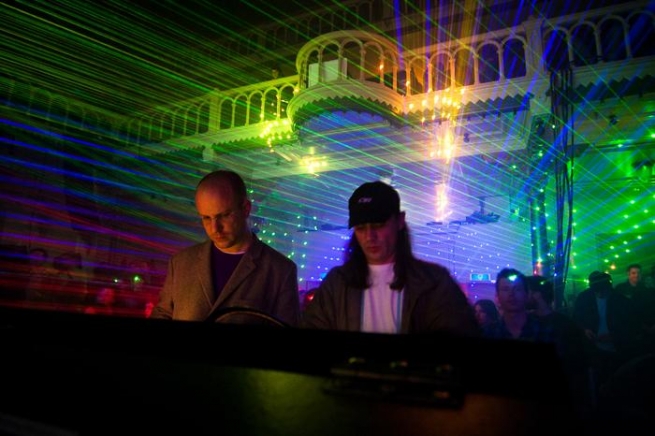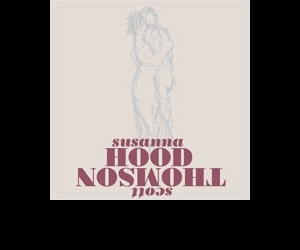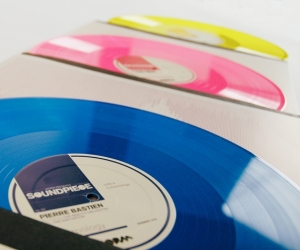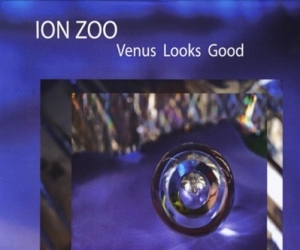
Since its launch in 2000, Sonic Acts has become a major biennial showcase for electronic music and intermedia art in Europe. This year’s thirteenth edition lived up to its reputation with an ambitious and densely packed program of concerts featuring new and established artists from such distant fields as immersive sound art, acoustic ecology, and visual music. Three days of conference sessions provided commentary from cultural theorists, media-art historians, and many of the artists featured in the festival.
The theme for the festival this year was The Poetics of Space: Spatial Explorations in Art, Science, Music, and Technology. How, the curators asked, might a work of art or music express or create a space? Answers were found mostly at the extreme limits of spatial sensation: from the nearly imperceptible acoustic phenomena captured by Jacob Kierkegaard, to the full-force audiovisual assault of Dutch duo Optical Machines.
Diversity was also a strength of the concert series, which was spread over three nights at the rock club Paradiso, with a finale at the Artis Planetarium that featured a performance by Francisco López and the première of a new eight-channel recording by the late Maryanne Amacher.
The sparse and understated playing of former AMM guitarist Keith Rowe set an almost subliminal standard, which was not maintained for long, as volume levels gradually rose over the course of the weekend. The first high point came on the opening night, during the chaotic live diffusion session by Russell Haswell and Florian Hecker, who controlled both the Paradiso’s massive sound system and a candy-coloured laser light show using Iannis Xenakis’s computerized musical composition tool UPIC. Installations in smaller adjacent rooms, such as Anthony McCall’s starkly minimal 1973 projection Line Describing a Cone, which draws the attention of its audience away from the screen and onto the projector and the beam of light itself, offered a welcome relief from the rising decibel level in the auditorium.
The third concert featured a smaller octophonic surround system which was set up in a ring under the first balcony, raising the intimacy level slightly but also leaving the majority of the audience outside the listening area. The effect was most promient during the opening program of live multichannel diffusions that brought together three of the acoustic ecology movement’s old guard—Annea Lockwood, Barry Truax, and Hildegard Westerkamp. In contrast to the physically massive approach that dominated the weekend, these compositions aimed at the sonic travelogue, juxtaposing sweeping evocations of exotic soundscapes with more subtle explorations of otherwise inaccessible aural environments. Other performances, like the massive invocation of airport runways by Gilles Aubry, involved volume levels that made spatial distinctions difficult to perceive in spite of the speaker placement, and forced those who valued their hearing to spend most of their time in the lobby. Another unwelcome side effect of the alternative setup was that the mobile Wave Field Synthesis system designed by Dutch collective Game of Life was sometimes drowned out, being forced to share a wall with the bar that had been relocated from the main room.
Unfortunately, the concerts at the Paradiso lent a degree of weight to one of the more cogent remarks in Labelle’s opening performance: “A club is not primarily a place for listening.” While encouraging diversity in spatial thinking, the festival made surprisingly little use of the wealth of conventional and unconventional venues in and around Amsterdam, instead emphasizing expressions of space inside the music over experiments with the way music can work inside a space. Perhaps screening films in a cinema or presenting multichannel electroacoustic works in a better-equipped concert space would have left more room to explore the sheer volume of the club or the planetarium. As it was, listeners were often left with too little space in which to appreciate the subtleties. Venues aside, however, the incredible dynamic and intensity of the sound did make for a few unforgettable bodily experiences, and the program lived up to its promise of an expanded scope and scale, even if this sometimes covered up a slight lack of delicacy.
Image: Haswell & Hecker, Sonic Acts 2010. www.sonicacts.com Image by: Tiemen Rapati.


